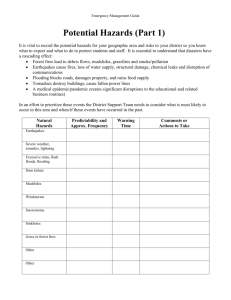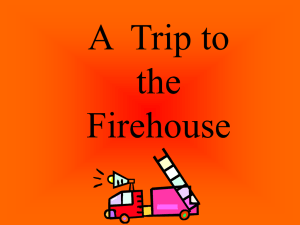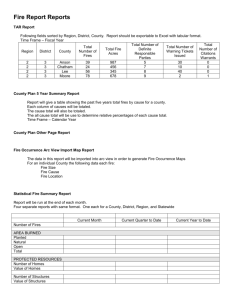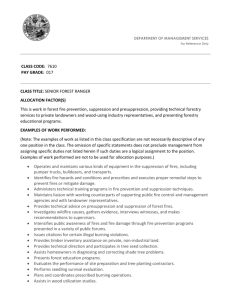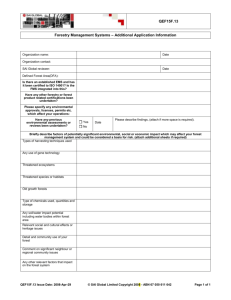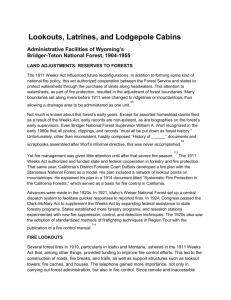A Firefighter's Solution: Building with Fire Safe Materials
advertisement
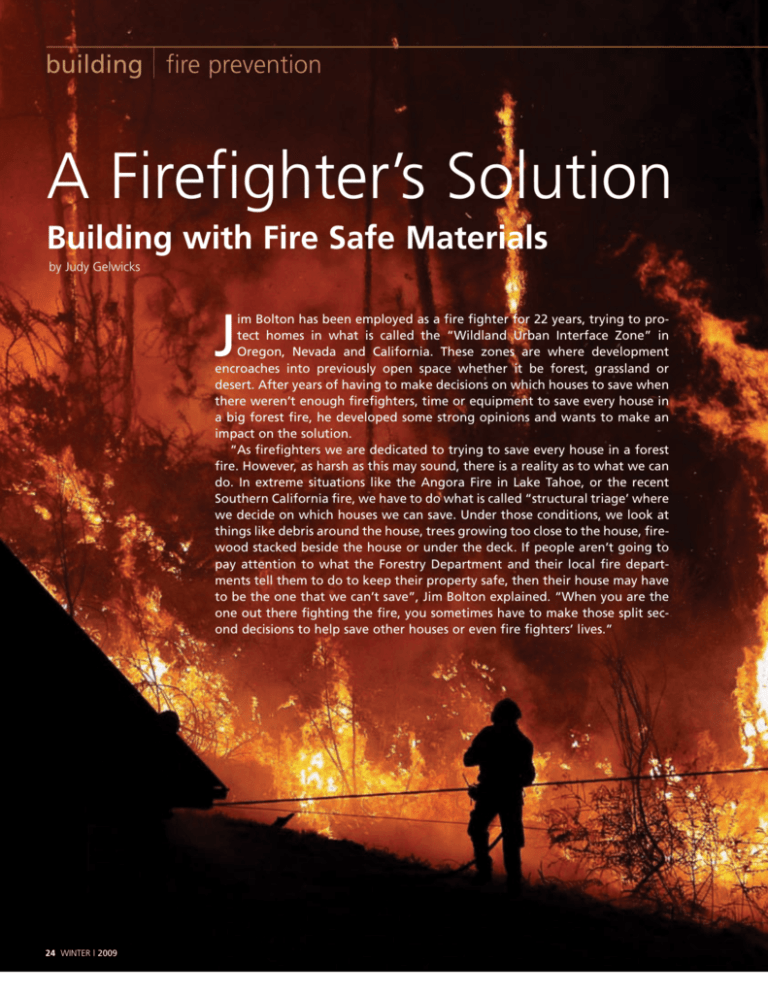
building fire prevention A Firefighter’s Solution Building with Fire Safe Materials by Judy Gelwicks J im Bolton has been employed as a fire fighter for 22 years, trying to protect homes in what is called the “Wildland Urban Interface Zone” in Oregon, Nevada and California. These zones are where development encroaches into previously open space whether it be forest, grassland or desert. After years of having to make decisions on which houses to save when there weren’t enough firefighters, time or equipment to save every house in a big forest fire, he developed some strong opinions and wants to make an impact on the solution. “As firefighters we are dedicated to trying to save every house in a forest fire. However, as harsh as this may sound, there is a reality as to what we can do. In extreme situations like the Angora Fire in Lake Tahoe, or the recent Southern California fire, we have to do what is called “structural triage’ where we decide on which houses we can save. Under those conditions, we look at things like debris around the house, trees growing too close to the house, firewood stacked beside the house or under the deck. If people aren’t going to pay attention to what the Forestry Department and their local fire departments tell them to do to keep their property safe, then their house may have to be the one that we can’t save”, Jim Bolton explained. “When you are the one out there fighting the fire, you sometimes have to make those split second decisions to help save other houses or even fire fighters’ lives.” 24 WINTER | 2009 building fire prevention “If people aren’t going to pay attention to what the Forestry Department and their local fire departments tell them to do to keep their property safe, then their house may have to be the one that we can’t save” The tremendous destruction of the Angora fire in South Lake Tahoe in 2007 is now blamed on the build up of forest fuel around houses in the over grown forest, as well as residents leaving items like lawn furniture with pillows on decks when they were away. “If fire wood was stacked under decks or beside the exterior wall of a house, it was fuel for the fire. Shake roofs, dead trees, piles of pine needles and stuffed pillows are like kindling for fires. All they need is a spark to get the fire off and running. You put a little wind into the equation and you can see how a wild fire can leap frog from one house to the next”, Jim stated. Because Jim is a firefighter and has seen the devastation, he wanted to take a more proactive approach to help protect homes from forest fires. With everything that he has experienced with fighting fires, he decided to get into the “fire safe building materials” business. First, he started a business called 3D Smart Structures, Inc., a distributor for fire resistant building panels, which are also considered excellent insulating materials. He has since expanded to a whole development company, Enviro-tech Development, which designs and builds fire safe structures. The fire-resistant panels are made of concrete with a core of recycled Styrofoam. Once the panels are in place, they are sprayed with concrete, making them water resistant and even more fire safe. Concrete is applied to both sides of the panel to finish the wall. This type of building system is a Structural Concrete Insulated Panel or SCIP for short. The concrete used completely eliminates “out casting” of CO2, making the panels environmentally safe. These panels are being used in three of the homes that are being rebuilt after the Angora fire where 250 homes were destroyed. Since decks are often the first part of the house to catch fire, Jim also distributes fire safe fly ash decking and fencing which looks just like wood but is 100% fire retardant. Decks in the Sierras are often composed of ultra dry wood and sparks landing on the dry decking, even from a barbecue, can get a fire established. Once the deck catches on fire, the house is in real danger of being consumed. “Living in the forest should be no different than going back-packing. You go prepared. You learn about your terrain, you take a map, a compass, and you learn about the hazards you may encounter. You should build and live in the forest knowing your environment and what to do to be safe. Fire is a naturally occurring event in the forest. There are thousands of fires started by lightening strikes each year. Then you add accidents like camp fires that are left without being completely extinguished; kids playing with matches or fire crackers; the barbeque, fire pit or backyard burn that jumps out of control; and then the most serious — arson. It all adds up to a lot of forest fires each year. We all ALPINE GREEN LIVING 25 building fire prevention Fire-resistant panels made of concrete and recycled foam are being used in some of the homes being rebuilt after the Angora fire. need to do our part to be part of the solution and take care of our own property to be as fire safe as possible, so if a fire comes to your neighborhood, your house can be one that can be saved.” Talking with Jim Bolton, one can tell that he is very passionate about the products he uses and recommends. In hearing his stories you can understand why. “If people had built their homes with appropriate materials for living in such a hazardous environment, many more homes may have been saved in the Angora and Auburn fires.” “Hopefully people will see the light and replace their homes with structural materials that can withstand such fires.” He estimates that the cost of going this route with the concrete panels is just 3-5% more than regular 2x6” wood frame construction. “However, due to the significant energy efficiency performance of the system, you get that back with the savings on utility bills in an average of about 2 years. Most importantly, you have the peace of mind of knowing your home is fire safe.” Something to think about for those of you who are planning to build in the mountains. 26 WINTER | 2009
